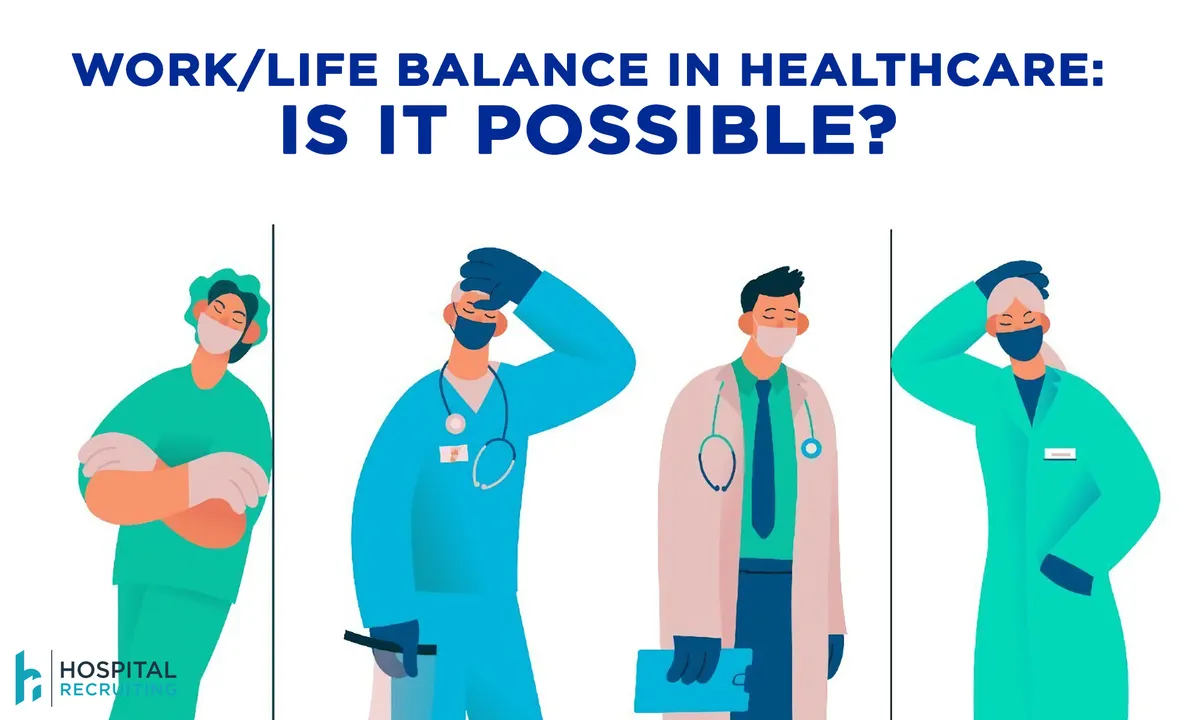Achieving Work/Life Synergy in Healthcare

According to the Mayo Clinic, poor work-life balance can lead to fatigue, poor health, and missed time with family and friends. Unfortunately, poor work-life balance is an issue that many healthcare providers struggle with.
In extreme cases, poor work-life balance can contribute to physician suicide, a growing issue in the United States. According to the American Hospital Association, about 400 physicians commit suicide every year in the United States alone. This issue is compounded by the fact that the completion rate of suicide by physicians is 44% higher than the national average. Also, physicians are twice as likely to commit suicide when compared to the general population.
With all those scary statistics aside, it is important to define what work-life balance is before delving into methods of putting it into practice.
Work-life balance is traditionally thought of as, in essence, a good separation of work-life and home-life. It is often thought of as the ability to detach from the workplace in a comfortable environment, having time to relax or participate in hobbies, and being in the “sweet spot” of neither “too much” nor “too little” work.
Easy to Say, Harder to Do
It is quite easy to say that work-life balance is something that we all need. In reality, putting this idea into practice is much, much harder. For healthcare professionals, the very idea of work-life balance can seem like a fantasy created in a human resources think-tank in some far-off land. But why is this so often the case?
I would argue that there are many reasons for this thought pattern. One of the biggest culprits is the grueling, long, and sometimes unforgiving shifts that we work. This could include long shifts in the clinic, brutal night shifts, or the cruel and unusual punishment known as swing shifts.
Another barrier to work-life balance in healthcare, especially in 2022, is the nationwide problem of staffing shortages. Wherever we work, it can be seen. There are not enough nurses, physicians, and support staff. Not only does this put stress on the healthcare system in general, but it also makes the workload bigger for those of us in the industry.
With all of this said, it is very important to note that good healthcare providers often bring their work home with them. Even when we leave the hospital or the clinic for the day, certain patients stick with us. While most would have it no other way, this can certainly impede the ability to achieve good work-life balance.
Is Work-Life Balance Possible, or Are We Asking the Wrong Question?

As healthcare providers, work-life balance can seem like a foreign concept. So, it is important to ask, “Is work-life balance even something that we should be trying to achieve?” Surprisingly, the answer may actually be “no.”
We are healthcare providers, and we love what we do (most of the time). Sometimes it is not necessarily a bad thing to be connected on a personal level to patients and the issues that they come to us with.
A better ideal to strive for may be something known as Work-Life Synergy.
Work-life synergy is the idea that we should not spend a lot of time trying to separate the ideas of “work” and “not-work.” Work and time away from work are all really just a part of life. Work and home life are more interconnected now than at any other time in human history. Because of this, it may be more beneficial to look at work and home life as a symbiotic, fluid, and ever-changing give-and-take relationship.
Another important aspect of work-life synergy is the idea that work and home life need to support each other. Just as you feel that you support your employer and the workplace that you are in, the employer and workplace must reciprocate this towards you as the employee. This is essential to achieve work-life synergy.
How Does it Actually Work?
With Work-Life Synergy defined, how can we, as healthcare providers, put this concept into practice?
One idea is to arrange time to work from home. This option will be very specialty dependent. Whereas our friends in Psychiatry may be able to work from home more often, those in General Surgery likely do not have this option. But if we get creative, maybe we can schedule more patients for telemedicine who do not necessarily need to come into the office for an appointment. Or maybe we can schedule longer days in the clinic, so that other days are shorter.
Another idea is to ensure a positive, uplifting workplace culture. We can help to form committees to assess what employees want to do outside of work, over lunch breaks, or sometimes during the workday to encourage cooperation and positive work relationships.
Tying directly into this is working to ensure workplace flexibility. If we are expected to be available after normal business hours, it is important to ensure that there is then flexibility during the workday. Someone may be more open to answering patient questions outside of business hours if the employer is flexible in allowing him/her to leave early for a child’s baseball game or early school pickup. This give-and-take is the cornerstone of work-life synergy and can lead to happier and healthier employees in the workplace.
Finally, if work-life synergy seems like a dream, and you are unhappy in your current position, it may be time to make a change. As mentioned above, there is a healthcare staffing shortage! If you do not feel valued or work has taken over your life, be proactive! Make a change for the better and find a workplace that values you are your skillset.
Related Posts
